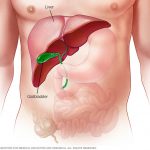Diagnosis

Since it is so hard to tell if a patient has a cold, the flu, a mild case of Pontiac fever, or actual LD, diagnosis can take some time. If you think you may have been exposed to LD through your building’s water systems or other areas of contaminated water, it is important to bring it up as quickly as possible because prompt treatment can reduce the severity of the issue. The first test for LD will normally be a chest X-ray. This lets the doctor see how far the infection has advanced into the lungs, so they can tell if the condition is Pontiac fever or LD. They may also take a sample of the patient’s urine or any phlegm they cough up.
Samples of blood, urine, or phlegm can be tested to see if the Legionella bacteria is present. If certain immune system antigens used to fight off Legionella are in the sample, then you have either Pontiac fever or LD. This is the most foolproof method for diagnosing LD but it is not always necessary. If you live in a building where many other people have been diagnosed with LD and are now exhibiting symptoms yourself, your doctor may not need further testing to diagnose you.
More from Things Health
-
Understanding Crohn's Disease
Crohn's Disease is an Inflammatory Bowel Disease commonly referred to as IBD. Inflammatory Bowel Disease consists of several disorders, the primary two are Crohn's Disease…
-
13 Tips to Having a Great Run
Even if you’ve been running for years, you’ll still have days where your pace is off, your speed is much slower than your personal best,…
-
6 Things to Know About a Low FODMAP Diet
If you or someone you know suffers from Irritable Bowel Syndrome (IBS), you are likely familiar with the digestion problems that come with it including…
-
Fatty Liver Disease
Non-alcoholic fatty liver disease is among the most typical causes of chronic liver disease. Studies suggest that though simple fatty liver is a condition benign,…
-
Celiac Disease Diet: 9 Gluten-Free Grains to Try
In recent years, everything from bagels to haircuts have been advertised as being “gluten free.” When the trend first started, many joked about the fact…

















